Main menu
Common skin conditions

NEWS
Join DermNet PRO
Read more
Quick links
Created 2008.
Dermatitis exclusively or predominantly affecting legs may be due to:
Normally during walking the leg muscles pump blood upwards and valves in the veins prevent pooling. Deep venous thrombosis or varicose veins may damage the valves resulting in oedema, particularly after prolonged standing and during hot weather.
Dermatitis due to venous disease (also known as ‘stasis eczema’ and ‘gravitational dermatitis’) can arise as discrete patches or affect the leg circumferentially. The affected skin is red and scaly, and may ooze, crust and crack. It is frequently itchy. Irregular haemosiderin pigmentation is usually present.
Common complications include:
Venous eczema Venous eczema Venous eczema 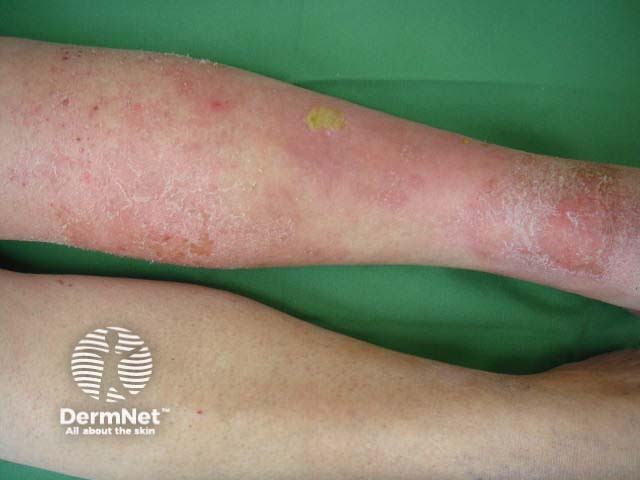
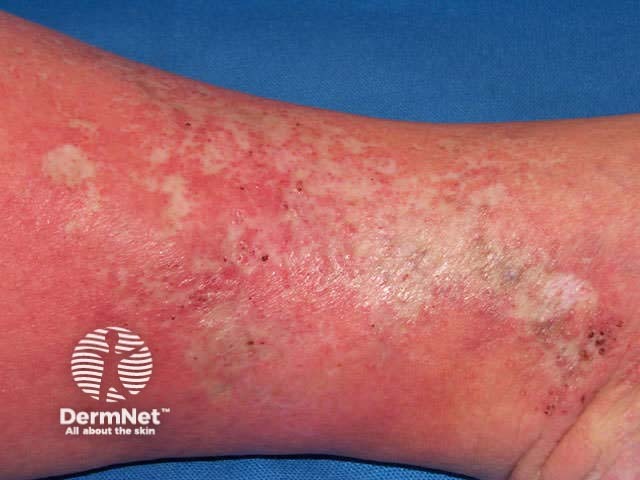
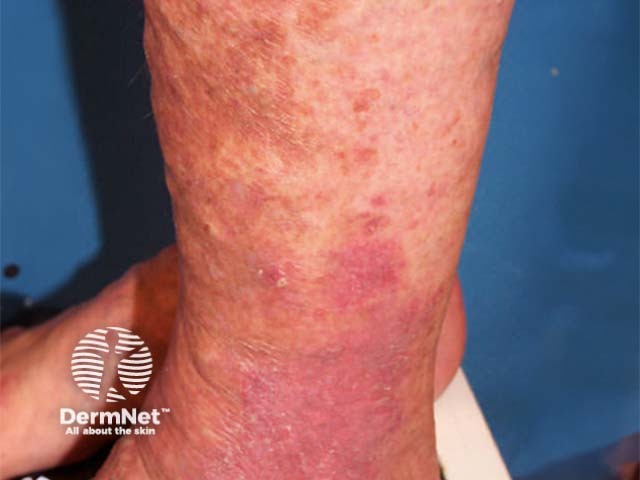
Varicose veins
Varicose eczema is a variant of nummular dermatitis in which discrete patches of dermatitis overlie varicose leg veins.
Varicose eczema Varicose eczema 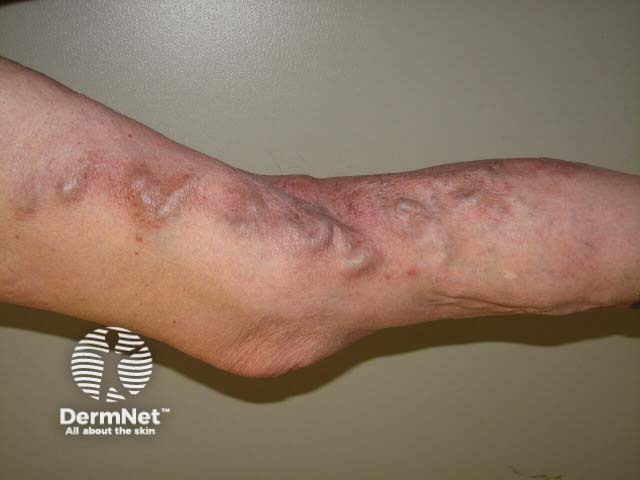
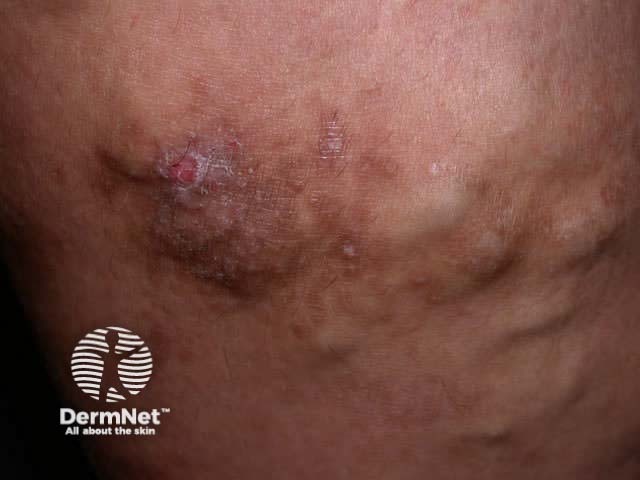
Ateatotic eczema presents as dry discoid eczema and is found most often on one or both lower limbs. Eczema craquelé refers to ‘crazy paving’ appearance.
Asteatotic eczema Asteatotic eczema Asteatotic eczema 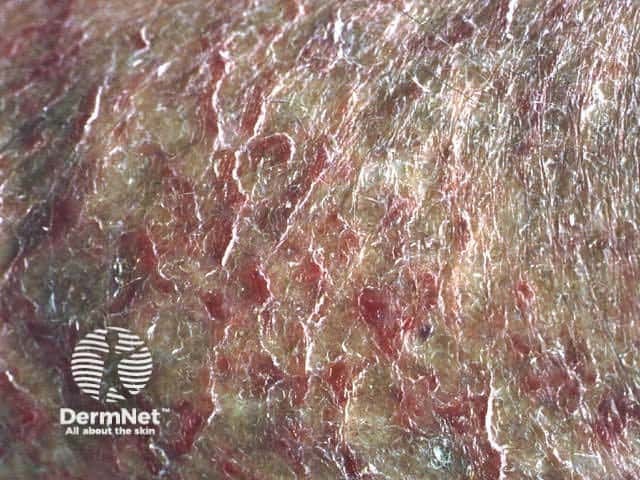
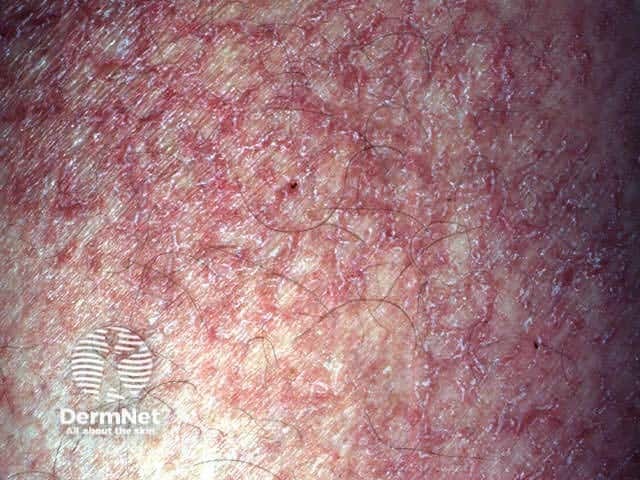
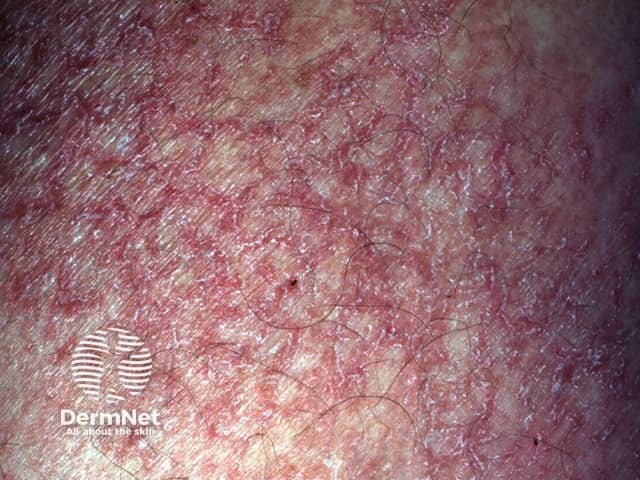
Psoriasis is the most common skin condition that may be confused with dermatitis on the lower legs. Other conditions to be considered in this site include:
Advise the patient to reduce swelling:
Management of the dermatitis requires wet dressings for acute blistering; emollients, especially if there is eczema craquelé; intermittent topical steroids; and oral antibiotics.
Seek the opinion of a vascular surgeon regarding value of eradicating varicose veins.
Describe the selection and use of compression hosiery.
Information for patients
See the DermNet bookstore